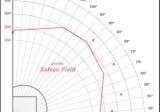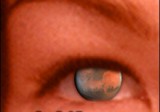Japan
JPN
Links for May 20, 2012
Play Carp Every Day, 2
 ...................
...................
Q. What are his stats in 2012?
A. He's hitting .159/.229/.477, which is what has prevented Seattle from realizing that Carp is in the process of taking a big plateau leap forward as we watch.
.
Q. There you go. We're waiting for his bat to warm up. IF it's going to.
A. Carp's BABIP is .107.
.
Q. Oh.
A. He's hit 4 home runs in 44 AB's, once again on pace for 40+ dingers (I know, but) -- this despite the injury and the sporadic playing time and shaking the rust off. This man can hit a mortal ton.
His shot in Coors Sunday had a "true" distance of 419 feet, was out of 30 parks, and had an apex of 120 feet ... meaning the pitcher threw it, Carp swung, and the ball would have cleared a 12-story building on its way out of the county. Tommy Davis once told Gene Brabender that he could follow the flight of a ball pretty well until he lost it in a cloud.
Carp's four home runs, in his 2-plus weeks' worth of play:
- 436 feet
- 429 feet (and apex 115 feet)
- 419 feet
- 375 feet on a line
Carp has the power to hit cleanup on a good team. By which we mean that he has a PX of 140, which is comparable to Teixeira's, Bruce's, and Pujols' (last year).
.
Red Shifting Up 100%
 ...................
...................
Shifting that puts lefty hitters' bank accounts into the red, that is.
Does it seem to you that the Mariners have seen a lot of shifting? They have. John Dewan is the guy I listen to the most about defensive stats in baseball, but don't let that sour you on him. He's the author of The Fielding Bible, and provides interactive updates on his work at BJOL. This week his article is titled "Shifty Business."
He finds that in 2010 and 2011, MLB teams deployed the shift about 1,900 times per season. In 2012, however, there has been a Cambrian Explosion of lefty-shifting -- teams are on pace to shift 3,800 times, and the rate is accelerating.
Links for May 15, 2012
Study suggests that at low dose-rate, radiation poses little risk to DNA Medical Express.com
There is radioactive black dust all over Tokyo, Japan. ex-sfk.blogspot.com
Fukushima disaster is killing the Pacific Ocean. Cosmicconvergence.org
Links for May 10, 2012
Links for May 9, 2012
Hisashi Iwakuma on 5.7.12
This article by Geoff Baker is one of his best ever, which is saying quite a bit. Far beyond a simple interview with Zduriencik, Baker gives a Ground Zero look into the way a real-world GM and manager sort out roster decisions.
Dr. D gets a bit weary sometimes of the bloggers who condescend from behind their monitors that "Wedge is a terrible talent evaluator" when, in fact, every talent evaluation that the Seattle Mariners make represents the combined expertise of dozens of people. In the Mariners' case right now, many of those people are the best in the business at what they do.
Yes, Iwakuma had adjustments to make from where he was in Spring Training. He also has a long, impressive career as a #1 starting pitcher, and those adjustments are falling into place.
........
On May 7th, Hisashi Iwakuma executed the pitches that made him a World Baseball Classic star, and champion, for Team Japan. Here's the graphic comparison to typical MLB (TM) pitches:
 ...................
...................
Everything below the horizontal X-axis is dropping farther than it would due to gravity alone - in other words, the pitch has enough topspin that the aerodynamics are pulling the ball toward the ground as it arrives at home plate. Fastballs have so much backspin that they "rise" in the air as they approach the hitter, but of course hitters are accustomed to a 5-8" rise. To them it doesn't look like rise; 5 to 8" rise looks straight. Anything other than 5-8" rise will appear to them as sail or drop.
Every major league pitcher* can topspin a curve ball to make it break down a bit relative to vacuum. But their forearms are tilted, right? The hand makes a karate-chop type motion on a plane with the forearm, which is why the slider and curve, above, move on about the same plane as Iwakuma's forearm.
Nobody has ever explained to me what a pitcher does, physically, to create topspin at the same time as creating a side-spin that is 45 degrees oblique to the pitcher's forearm. The red star is the Japanese "shuuto," a pitch that right hand batters cannot hit. If they're lucky, they foul it into their feet. It's a big reason that MLB All-Star teams cannot beat Japanese teams.